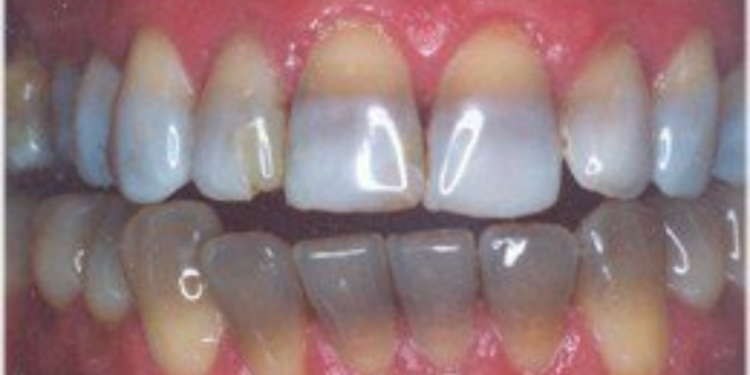When it comes to dental health, most of us are familiar with the common culprits of tooth discoloration, like smoking and poor oral hygiene, which often result in yellow stains on our teeth. However, have you ever wondered why your teeth might appear blue or gray? In this article, we’ll delve into the causes of blue or gray teeth, addressing the possible explanations and shedding light on how to address this issue.
Causes of Blue or Gray Teeth
1. Aging
As we age, our teeth go through various changes, including natural discoloration. Over time, the enamel that covers our teeth may wear down, revealing the yellowish dentin layer beneath. However, aging can also lead to a grayish-blue hue in your teeth, which may not be solely due to the natural aging process.
2. Dead Teeth
Sometimes, a tooth may appear blue or gray because it is no longer vital. A healthy tooth contains living pulp and nerves. When you notice a tooth changing to a gray, blue, black, or dark pink color, it may indicate that the nerves and pulp within the tooth have died. Various factors like infection, trauma, and decay can contribute to tooth death and the subsequent color change.
3. Dentinogenesis Imperfecta
Dentinogenesis imperfecta, a rare genetic condition, can cause teeth to become translucent or exhibit a yellow-brown or blue-gray appearance. This condition may also lead to misaligned and weakened teeth, which can result in issues such as wear, breakage, and tooth loss.
4. Dental Restorations
Dental restoration procedures are designed to address a range of dental problems, including chips, cracks, decay, and missing teeth. While these processes can be highly effective, they can also result in tooth discoloration over time. Materials used in dental restorations, such as dental amalgam, acrylic, glass ionomer, and porcelain, may become visible through the translucent enamel or porcelain surface of the teeth, sometimes causing a blue or gray appearance.
5. Dental Trauma
An injury to a tooth, gums, or nearby tissues can result in reduced blood flow to the affected tooth, causing it to turn blue or gray. While some teeth may naturally heal and return to their original color, others may remain discolored or even die.
6. Exposure to Antibiotics as a Fetus or Child
Exposure to tetracycline antibiotics before the age of 8 can lead to teeth discoloration in adulthood. This often manifests as blue-gray or yellow-brown horizontal stripes on the teeth. Unfortunately, these stains from early antibiotic exposure tend to be permanent and do not fade with regular brushing and flossing.
7. Root Canals
Tooth discoloration can occur if any pulp tissue or filling materials are inadvertently left inside a tooth during a root canal procedure. Certain root canal medications, such as Ledermix and Ultracal XS, can also contribute to tooth discoloration.
Diagnosing the Cause of Blue or Gray Teeth
If you’re experiencing the unsettling issue of blue or gray teeth, it’s essential to seek professional dental guidance to identify the root cause. Your dentist will conduct a proper checkup of your teeth and gums, looking for any signs of discoloration. They may also utilize X-rays to gain a better view of your teeth and perform a pulp test to detect any indications of pulp necrosis, a condition where the pulp tissue in the tooth has died.
Final Words: Why Are My Teeth Blue?
In conclusion, the appearance of blue or gray teeth can be concerning, but there are various potential causes and solutions to address this issue. If you find yourself wondering, Why are my teeth blue? It’s important to consult a dentist to find the exact reason and receive the appropriate treatment. Remember that maintaining good oral hygiene and regular dental check-ups can assist in preventing and addressing dental issues before they become more severe.




